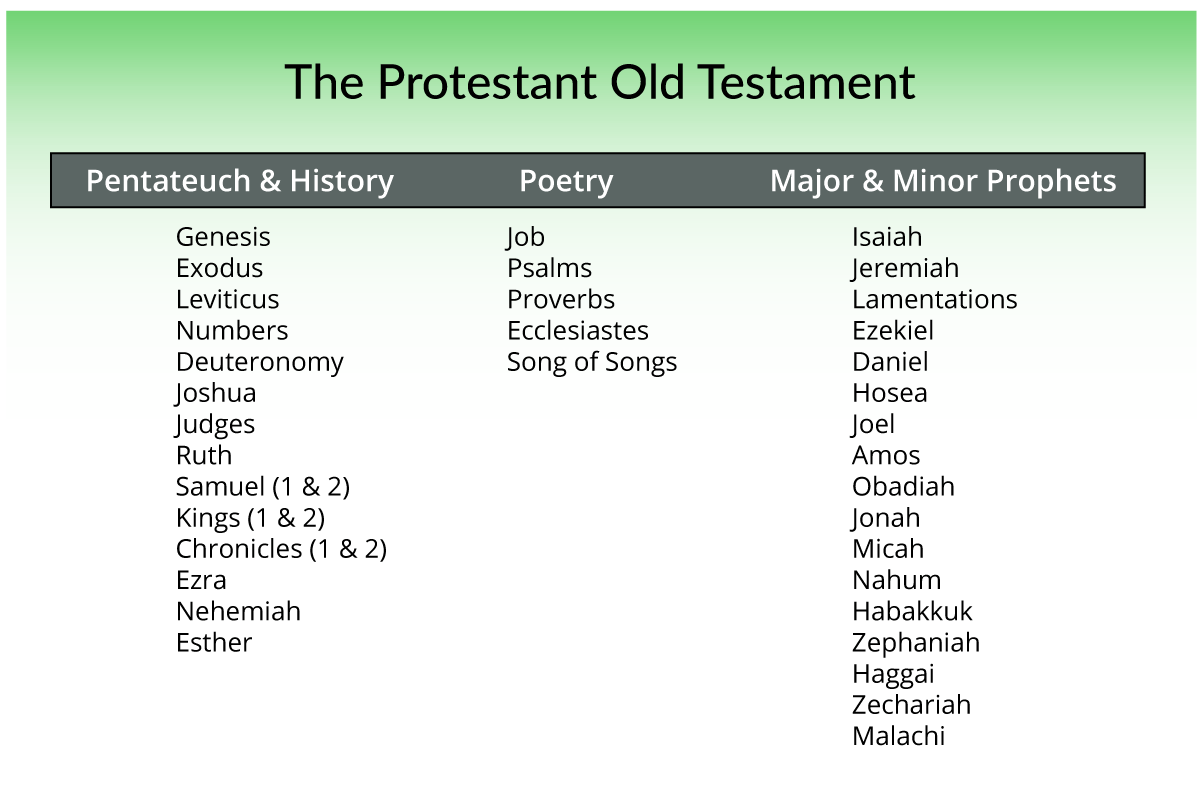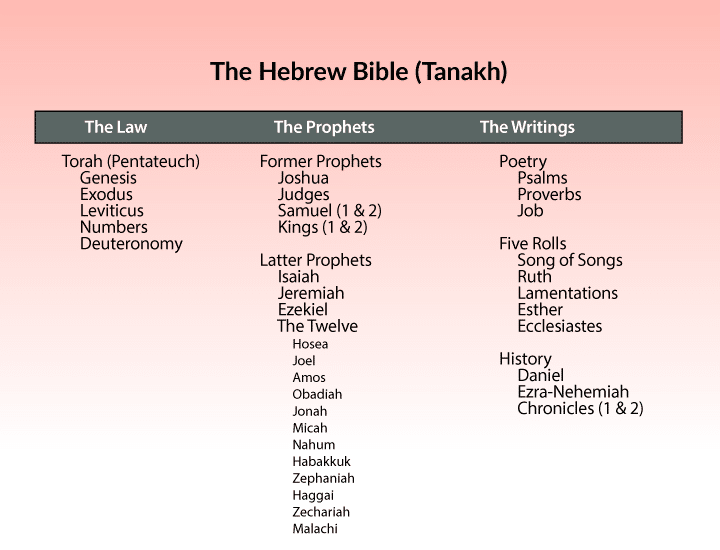Bible Question:
How is the Jewish Bible or Tanakh different from the Bible?
Bible Answer:
The Jewish or Hebrew Scriptures are called the Tanakh, but Jesus and the apostles used the word Scriptures. The content of the Hebrew Bible and the Old Testament of the Protestant Bible are identical; however, they are organized differently. So, how is the Jewish Bible or Tanakh different from the Bible?
The Christian Bible
The Old Testament contains thirty-nine books which are ordered by subject matter in one long list starting with Genesis and ending with the book of Malachi. These Old Testament books are organized into five different topical groups: Pentateuch, History, Poetry and the Major and Minor Prophets. However, the Old Testament is not formally divided into these groups with section dividers. The books of the Old Testament and their arrangement were affirmed at the Council of Hippo in A.D. 393. [1] F. F. Bruce states that when the council made this formal announcement “. . . they did not impose any innovation on the churches; they simply endorsed what had become the general consensus.”[2] Another difference between the Tanakh and the Christian Bible is that the Bible includes the New Testament. For a list of the chapters and verses in the Old and New Testament visit “How many chapters, verses, and words are in the Bible?”

The Tanakh
In contrast, the Hebrew Bible or Tanakh contains only twenty-four books. The difference in number between the Christian and Hebrew Bibles is that 1 Samuel and 2 Samuel are combined into Samuel. 1 Kings and 2 Kings are combined into Kings. 1 and 2 Chronicles are combined into Chronicles. The twelve minor prophets of the Christian Bible are combined into The Twelve in the Tanakh. The two books of Ezra and Nehemiah are combined into one book for a total of 24 books.
These twenty-four books include all of the thirty-nine books in the Old Testament but in a different order. The Tanakh begins with the book of Genesis and ends with the Old Testament book of 2 Chronicles. The Tanakh is formally divided into three sections: “The Law” or the Torah, “The Prophets” or the Nevi’im and “The Writings” or the Kethuvim. Geisler and Nix state,
“The Old Testament canon was probably completed about 400 B.C., and perhaps by about 200 B.C., the twenty-two books that had undergone this process of canonization began to assume a threefold categorization: the Law, the Prophets and the Writings. One reason suggested is that they were eventually separated on the basis of whether the writer was officially a prophet, or whether he was a priest, prince or king through them God had given a prophetic utterance. Another reason is that a third division may have been created for liturgical reasons (to fit their festal year).”[3]

Conclusion:
The order and divisions of the Tanakh help us understand some extremely important statements that Christ made in the New Testament. Luke 24:44 is one of the most significant statements Christ made since it reveals 1) the Hebrew Scriptures had three divisions and 2) He considered the Hebrew Scriptures to be inspired.
Now He said to them, “These are My words which I spoke to you while I was still with you, that all things which are written about Me in the Law of Moses and the Prophets and the Psalms must be fulfilled.” Luke 24:44 (NASB)
Notice that Jesus refers to the “The Law” as the Law of Moses, “The Prophets” and the Psalms. By referring to the Psalms, which is the largest and first book in the section called “The Writings,” Jesus endorsed the Hebrew Bible as it existed when He walked among us.
References:
1. F. F. Bruce. The Canon of Scripture. InterVarsity Press. 1988. p. 97.
2. Ibid.
3. Geisler and Nix. A General Introduction to the Bible. Moddy Press. 1973. p. 161.
Suggested Links:
How many chapters, verses, and words are in the Bible?What is the Tanakh?
How Accurate Is the Bible?
What books belong in the Bible? – Canon of Scripture
Should the Deuterocanon be included in the Holy Bible?